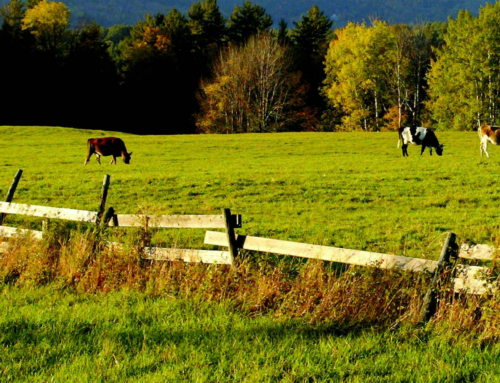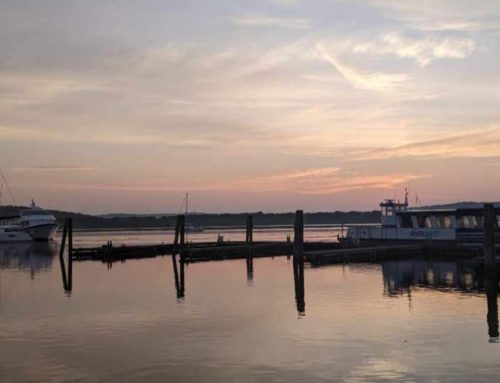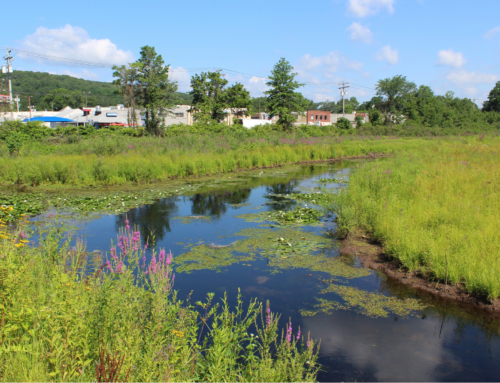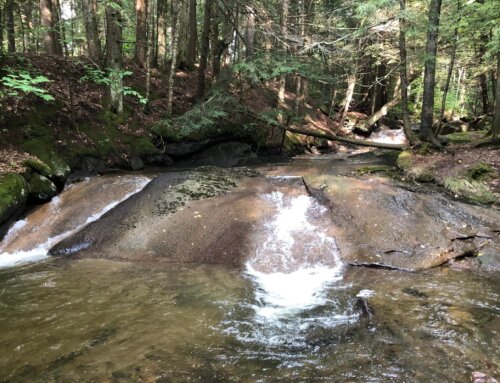November 22, 2021
Sayad Moudachirou
Licensing Manager
Ampersand Gilman Hydro LP
717 Atlantic Avenue, Suite 1-A
Boston, MA 02111
Re: CRC comments on the Gilman hydroelectric project (P-2392) Draft License Application
Dear Sayad,
The Connecticut River Conservancy (CRC), is a nonprofit citizen group established in 1952 to advocate for the protection, restoration, and sustainable use of the Connecticut River and its four-state watershed. The interests and goals represented by CRC include, but are not limited to, improving water quality; enhancing habitat for fish and other aquatic biota; safeguarding and improving wildlife habitat; protecting threatened and endangered species; protecting wetlands; preserving undeveloped shore lands; enhancing public recreation and promoting recreational safety; protecting aesthetic values; protecting archeological, cultural, and historical resources; fostering sustainable economic development; and maintaining the potential energy benefits of a hydroelectric project in the Connecticut River watershed.
The Vermont River Conservancy protects public access, wildlife habitat, clean waters, scenic natural beauty and ecological integrity by conserving undeveloped land along rivers, lakes and wetlands of Vermont. The organization was started in response to choice swimming holes, canoe put-ins, fishing accesses and waterfalls being put off limits to the communities that had traditionally used them. Since 1995, working in cooperation with state and federal agencies, municipalities and other conservation organizations, VRC has completed projects at over 75 popular local swimming holes, gorges and waterfalls, fishing and boating accesses – protecting paddlers’ trails and meandering river corridors for all to enjoy.
CRC and VRC have reviewed the Gilman hydro-electric facility Draft License Application (DLA) dated November 1, 2021. Our comments are below.
§4.6.5 E.6.5 Invasive species
The applicant should add Flowering Rush and Water Chestnut to their list of potential aquatic invasive species that are present in the Connecticut River watershed. Flowering Rush (Butomus umbellatus) has been found at the confluence of the Black River and Connecticut River. Water Chestnut (Trapa natans) has been found at several spots along the Connecticut River in backwater areas. While the applicant mentions invasive species they do not provide any suggestion management for these species. CRC would appreciate some commitment to monitor and manage for invasive terrestrial and aquatic species in the project area. Invasive species often moved from one area to another by boat traffic and can often be first identified near boat access areas. The applicant should include invasives species management as a routine part of their recreational access maintenance requirements.
§4.6.9.2 E.6.9.2 Recreational Management Plan
The applicant indicates in their draft license application that they are proposing the following improvements, which includes:
• “Providing designated camping areas and outfit these areas with picnic tables and campfire pits;
• Removing rocks from the Canoe take out to make it smoother, and ease the take-out process.
• Improving the access for the second put-in located downstream of the Gilman Dam. That put-in is suitable for canoes and kayaks; it is part of the Gilman Dam Canoe Portage path. Upgrades will be made to facilitate access around the large boulders on the riverbank.
• Replacing current trash receptacle with two covered, animal proof, secured waste receptacles. Possible locations to be one at the end of the canoe take out trail, and the other located at the camping area near the river put in.1”
While CRC and VRC are appreciative and are supportive of the proposed upgrades, we feel that they fall short of what is needed at the site. We ask the plan be amended to include additional portage trail improvements, a formal parking area for day users, better signage and site monitoring, a system to address human waste, a timeframe for completing these upgrades, a time frame for plan implementation, and a commitment to regular site maintenance. We note that several of these recommendations were previously provided to the licensee as documented during the June 22nd site visit meeting notes attached to the application document.
Additional portage trail improvements: A section of the portage trail is steep and eroding (Photo 1). We recommend a set of approximately 6-8 stone steps be installed to facilitate access and reduce environmental impacts. A nearby fisherman’s trail is also suffering from erosion and would benefit from a similar set of stone steps. In addition, the put-in beach is covered by loose, round rocks that provide poor footing (Photo 2). We recommend these rocks be removed to create a flat and even tread surface.
Parking area: The recreation plan does not provide a designated parking for day users, despite survey respondents explicitly requesting parking improvements. Currently some users park on the shoulder of NH Route 135, just outside of an emergency access gate (Photo 3). This is not ideal due to limited space, poor highway site lines, and the potential for users to block emergency vehicles access. We ask the licensee to establish a formal parking area for day-users a little ways down the access road with stones and bollards to prevent further drive-in use. Please see the map below that shows a potential parking location.
Signage and monitoring: We recommend the licensee install wayfinding signage off Route 135 as well as signage clarifying site rules and regulations in the camping and day use areas. At other sites managed by power companies, access road gates are opened and closed daily and cameras have been installed to monitor site use. These approaches may be appropriate for this site as well.
Human waste management: We ask that the licensee include a portable toilet or a mouldering privy to accommodate day users and campers. The Connecticut River Paddlers Trail Management Protocol calls for privies at all designated campsites. Day users also frequently request sanitary facilities. Both NH and VT have increased efforts to develop their respective recreational economies. Given this, and the increase of outdoor recreational use from the Covid pandemic, we anticipate river use will continue to increase over the coming 40 years and would prefer to see this addressed proactively in the management plan.
Time frame and management plan: We ask that the licensee include a timeline for implementation of the management plan with a clear financial commitment explicitly stated as part of the Recreational Management Plan. Additionally, the applicant should provide a schedule for site monitoring visits and a financial commitment to maintaining the recreational access amenities over the life of the license, with detail as to the cycle of maintenance and expected maintenance costs over the 40 year license agreement.
We appreciate the opportunity to provide comments. I can be reached at kurffer@ctriver.org or (802) 258-0413.
Sincerely,
Kathy Urffer
River Steward, CRC
Noah Pollock
Project Manager, VRC
Stewardship Director, Northern Forest Canoe
Attachment: Gilman Potential Recreation Amenities overview
CC:
Greg Cloutier, Ampersand Gilman Hydro
Amit Pinjani, Ampersand Hydro, LLC
Sayad Moudachirou, Ampersand Hydro, LLC
Jeff Crocker, VT DEC
Eric Davis, VT DEC
Betsy Simard, VT DEC
Gregg Comstock, NH DES
Jud Kratzer, VT Fish and Wildlife
Luke O’Brien, VT Forest, Parks and Recreation
Dianne Timmins, NH Fish and Game
Melissa Grader, USFWS
1 Gilman Hydro (P-2392) Draft Application for License for Minor Water Power Project. November 1, 2021. Page 163.









